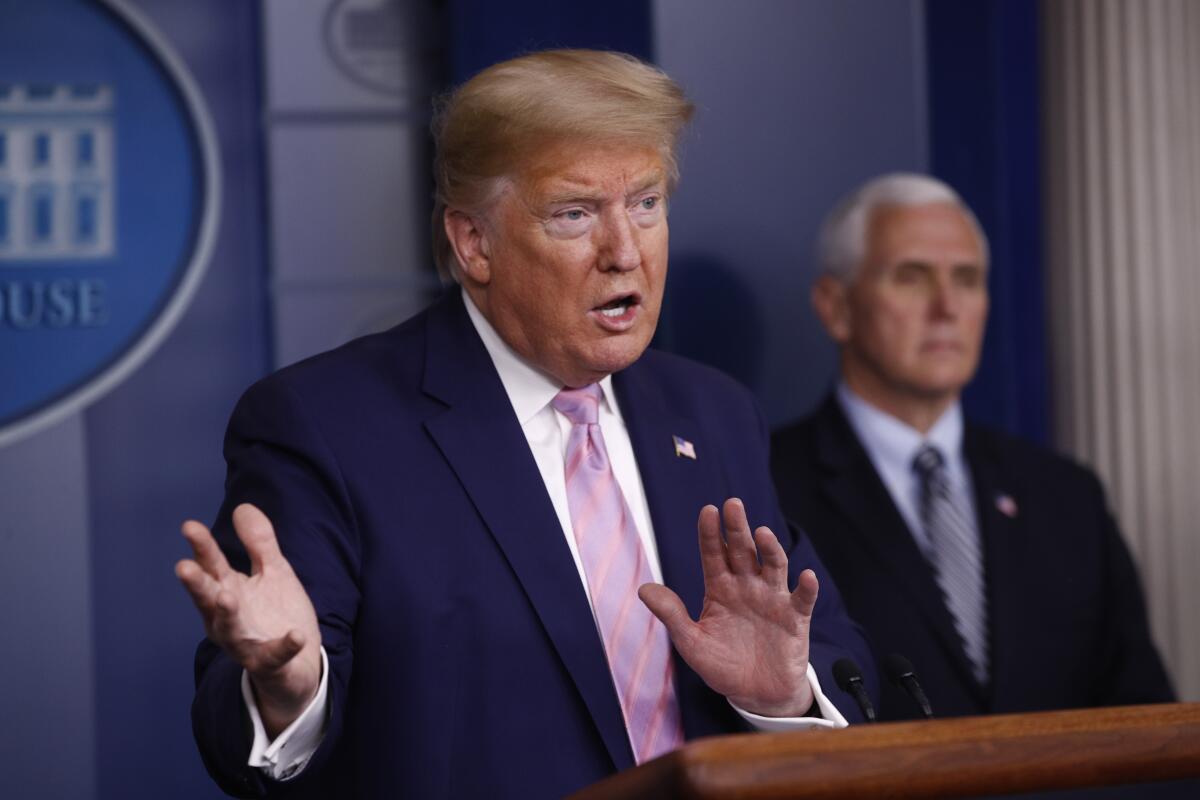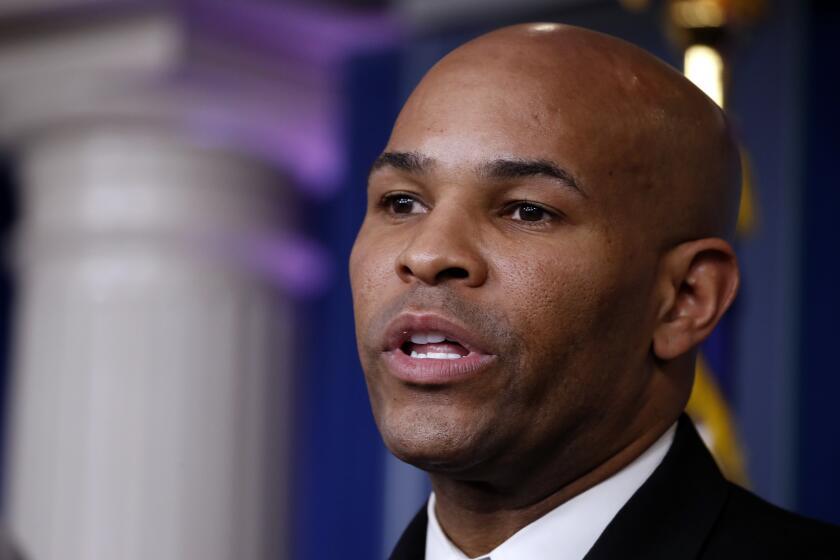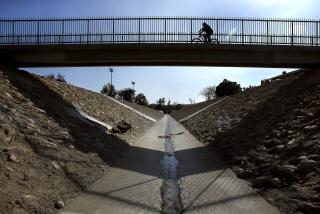Editorial: We were caught flat-footed by COVID-19. How can we do better?

- Share via
President Trump’s self-aggrandizing claims notwithstanding, the federal government’s response to the early warnings of the COVID-19 pandemic was slow and inadequate. Part of the fault certainly lies with Trump himself, whose initial dismissive attitude cost crucial weeks that should have been spent girding for the outbreak.
But even the fastest-responding chief executive would have been hampered by what experts have been warning for years is a dangerous lack of local, national and global preparedness for a pandemic of this scope. And even as this disease continues to spread and kill, we would be well-served to understand where the nation fell short so we can better prepare for the inevitable next one.
One fundamental problem is that, as good as the government can be at making plans for crises like the one we’re in today, it does a poor job of following them.
The federal, state and local governments all have emergency response plans, some of them evolving over years and revised after pandemics such as the 2003 SARS and 2012 MERS outbreaks (two previous coronaviruses) and the sporadic eruptions of the Ebola virus in Africa.
A 2005 Health and Human Services Pandemic Influenza Plan warned that the government should expect a virus to spread rapidly worldwide, passed along even by people who are asymptomatic; near-simultaneous outbreaks across states and local jurisdictions; “enormous demands on the healthcare system,” with delays in developing and distributing a vaccine and antiviral drugs; and disruptions of commerce and transportation systems. A dry run exercise last year called “Crimson Contagion” reached a similar conclusion.
Top U.S. health officials are warning of a difficult week ahead in the coronavirus crisis.
The COVID-19 outbreak played out just as those plans and simulations warned, and as predicted it threatened to overwhelm hospitals and intensive care units because there was no vaccine or proven treatments for the novel disease. Our response, though, was what one would expect from a country that had been taken completely by surprise, not a country with a plan for rapid, comprehensive and systemic efforts to identify and quarantine the people who’d been infected. As a result, states were left to wield the blunt instrument of social distancing mandates and shelter-in-place orders that have crushed businesses and caused 10% of U.S. workers to lose their jobs in three weeks.
Why were South Korea and Singapore able to suppress the pandemic with so little loss of life and so little damage to their economies, but we weren’t? Their smaller scale certainly helped, given the need for population-wide testing for the virus. Another factor was the political will in those countries to intrude more on individual privacy in order to track and isolate the virus. Would Americans agree to let the government work with mobile phone companies to monitor their movements during a pandemic? Maybe now they will.
Stronger (and in the case of Singapore, more authoritarian) central governments contributed to those countries’ success too, while our federalist system — combined with an impulsive and inconsistent president — has struggled to produce a coherent response. It doesn’t take a strongman at the top to beat a pandemic, but it does require a lot more coordination than this country’s leaders displayed. Fifty states responded in 50 different ways, not all of them smart.
The patchwork of leadership and decision-making has led to an uneven distribution of ventilators, protective masks and other vital medical equipment and no reliable system for ensuring that these items get to the people who need them most; too slow and uncoordinated an effort to produce these goods at the necessary scale; too much reliance on the whims of political leaders, some of whom discount the expertise of public health experts when charting courses of action; and no clear national strategy for restarting the economy.
Of high significance: We have no workable system to protect healthcare workers from falling ill themselves. The best healthcare system in the world will stumble if the people testing, treating and caring for patients cannot do their work because they are ill — or dying — themselves, or if they carry the infection and become part of the problem.
Even when officials here have paid attention to the warnings and prepare for worst-case scenarios, their efforts can be undermined by the ever-shifting politics and business cycles in this country. Anticipating an avian flu epidemic, Gov. Arnold Schwarzenegger in 2006 ordered a state strategic reserve of critical medical equipment and supplies, which included three 200-bed mobile hospitals. But the budget crisis brought on by the subprime mortgage meltdown and the 2008-09 recession led Gov. Jerry Brown to slash spending on anything not deemed essential, including the state’s medical stockpile. The episode is a stark demonstration of the U.S. political system’s short-term focus, which makes us all the more vulnerable to unusual and extreme events like pandemics.
The president must drop his opposition to ‘globalism’ in the interests of public health
The current pandemic has exposed other shortcomings as well. The millions of workers being laid off are also losing their health coverage, thanks to the country’s unique reliance on employers as the primary provider of health insurance. Yes, idled workers can continue coverage under the COBRA program, paying the full company-negotiated monthly premiums themselves, or turn to the Affordable Care Act (or Medicaid, if they fall below the poverty line). But with incomes slashed it’s unclear how many can afford such coverage — especially when their primary concern is housing and food. That’s a dangerous position in the middle of a global health crisis, and a good argument for a more comprehensive and portable approach to health insurance.
Similarly, about a quarter of workers do not have access to paid sick leave, a rate that rises to about 50% for low-wage workers in the service and retail industries who often come into direct contact with customers. Needing the income, ailing workers without paid sick days tend to show up for work anyway, making them vectors for the spread of disease. Historically the U.S. has viewed paid sick days as a labor perk; in reality, it is a public health necessity. We also need better mechanisms for letting caregivers tend to sick children or parents without losing pay or jobs, and without impoverishing themselves or their families.
And our all-or-nothing approach to employment during sharp downturns deserves fresh scrutiny, especially if we’re going to induce more contractions in response to future pandemics. In Germany, the government underwrites workers’ wages during convulsions through a short-term Kurzarbeit program that keeps people officially employed, making it easier for companies to retain their workforce and resume productivity when the economy turns around.
Congress tried to launch a similar program as part of the $2-trillion coronavirus relief package, calling on banks to quickly issue government-backed “payroll protection” loans that small businesses did not have to repay if they spent the money mainly on their workers. It’s a good concept that could provide the basis for future rescue efforts, but the first go-around has left much to be desired. Banks say the government provided late and inadequate guidance, many businesses complain that their loan applications aren’t being accepted, and analysts say the $350 billion allocated by Congress isn’t nearly enough to meet the need.
This pandemic has also spotlighted weaknesses in the criminal justice system. Efforts are underway to try to release people from our sinfully overcrowded jails and prisons, particularly those who could not afford bail, and people convicted of crimes that did not involve violence. Their exposure now to a potentially deadly virus raises the question of what purpose their incarceration served in the first place.
We always knew that the entrenched institutionalized racism in the U.S. had real consequences, but the pandemic underscored that point. Black Americans are dying from COVID-19 in shockingly, disproportionately high numbers. In just one example, black residents account for only 30% of Chicago’s population but 72% of COVID-19 deaths. When the final numbers of sick and dead are tallied, there are going to be some tough discussions about how to address the shameful health disparities that have resulted from generations of unequal access to healthcare, education and income.
Some of this country’s broad failure to properly prepare can be blamed on human nature. Much like humankind’s approach to addressing climate change, people tend to not deal with threats that are not immediate. But we consider and debate these issues within timeworn and short horizon frameworks. The COVID-19 pandemic has been a real-world stress test that a number of our institutions and approaches have failed. Now is the time to figure out how to gird for the next challenge.
More to Read
A cure for the common opinion
Get thought-provoking perspectives with our weekly newsletter.
You may occasionally receive promotional content from the Los Angeles Times.












